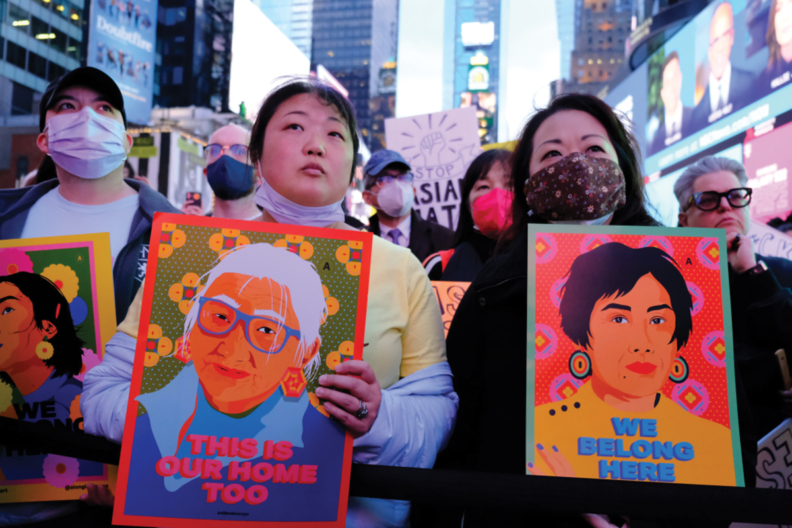Column: Constitutional Limits on Congressional Investigations Into Palestine-Israel Advocacy
Civil Liberties Union
Asian American, Native Hawaiian, and Pacific Islander history in schools would be a game changer.

My family came to the United States as refugees from Vietnam. In school, the only time I was taught about my history was during a lesson about the Vietnam War. During this segment — as one of the few Asian students in my school and the only Vietnamese person in my class — I felt everyone’s eyes focusing on me. I can’t recall what exactly was being said about the war, but it was maybe only the second time anything related to Asian American history was taught in my class.
During the lesson, my peers didn’t truly get a sense of me or my family’s history and, even worse, neither did I. Sadly, I’m one of many millions of students in the United States who barely see themselves reflected in the classroom.
Thankfully, things are starting to change. In New York City, Asian American and Pacific Islander curriculum — which was taught in about a dozen schools last fall — will expand across the public school system in 2024. This September, the City will pilot a Black studies curriculum in social studies in a handful of classrooms before expanding across all grades. There is momentum to ensure that students see themselves in curricula, something the younger version of myself would have greatly appreciated.
This momentum is critical because the Asian American, Native Hawaiian, and Pacific Islander (AANHPI) community is the fastest-growing ethnic group in the United States. There are 20.6 million people who identify as Asian, Native Hawaiian or Other Pacific Islander alone (not in combination with another race), making up six percent of the nation’s population, according to the 2020 Census. We make up at least 10 percent of the New York State population. Yet, our state’s social studies standards only scratch the surface of AANHPI history.
There is legislation at the state level – sponsored by Senator John Liu and Assembly Member Grace Lee – that seeks to change that. At a time when more than 40 states have introduced or passed laws to restrict how issues of race and racism are taught, New York should join Illinois, Connecticut, and New Jersey to mandate inclusive history and social studies.
The legislation would require public K-12 schools to provide instruction on AANHPI history and civic impact. Specifically, it would highlight the history of the diaspora of the AANHPI community in New York and the Northeast; the movement and policies that brought AANHPI communities to the United States; the contributions made by the AANHPI community in government, the arts, humanities, science, and the economic, cultural, social, and political development of the United States; and the structures and historical events that have limited or harmed the AANHPI community.
Importantly, the curriculum would also cover the bond between the AANHPI community and other historically marginalized communities, especially as it pertains to the civil rights movement.
During the lesson, my peers didn’t truly get a sense of me or my family’s history and, even worse, neither did I.
This type of legislation is long overdue and has a great number of benefits.
First, integrating AANHPI history into school curriculum can help decrease violence, prejudice, stereotypes, and discrimination against the AANHPI community. Beginning in 2020, we saw a tragic resurgence of violence against AANHPI people. Hate crimes against AANHPI New Yorkers have dramatically increased. Incidents targeting Asians rose by 361 percent from 2020 to 2021, and this is not the first time we’ve seen a surge in anti-Asian violence. After 9/11, for example, members of the South Asian community were targeted, with sometimes deadly results.
Discrimination and hate are inflicted more easily upon people we do not know. Learning more about AANHPI history, culture, and contributions can help to reduce “othering” and challenge the idea of AANHPI people as “perpetual foreigners.”
The bill could also reduce bullying, harassment, and discrimination against AANHPI youth by promoting a sense of belonging in schools. According to the U.S. Department of Justice and U.S. Department of Education, Asian American and Pacific Islander students across the country have reported increased instances of bullying and harassment. One way for us to keep our youth safe is to educate their teachers and classmates about their communities in an accurate and appropriate way.
Additionally, the legislation promotes solidarity between students in the classroom. We want to highlight moments in our history when leaders in the AANHPI community, like Yuri Kochiyama and Larry Itliong, partnered with leaders in the civil rights movements in the United States. This shows the history of our collective fight and struggle.
Connections like these are more important than ever as we engage in the intersectional fights to end police brutality, expand access to abortion, protect LGBTQ people, end environmental racism, and more. These battles require a collective, unified response.
Finally, the bill will improve academic achievement. A number of recent studies have found that students are more engaged in school after taking classes that frankly discuss racism and bigotry.
All students should be able to see themselves in the education they receive. This bill would bring us one step closer to an inclusive classroom for all.